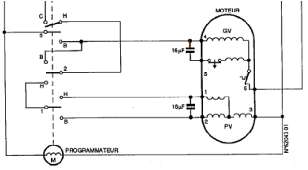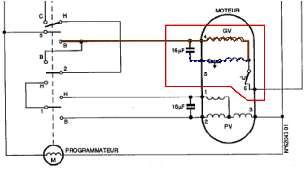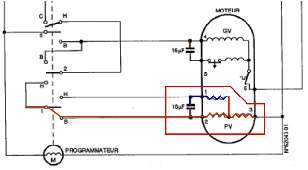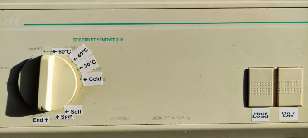Rick's b.log - 2022/01/01
You are 3.137.166.61, pleased to meet you!
Rick's b.log - 2022/01/01 |
|
| It is the 23rd of November 2024 You are 3.137.166.61, pleased to meet you! |
|
mailto: blog -at- heyrick -dot- eu
Somewhere to the south east, and I didn't see anything so it must have been over a kilometre away, somebody was partying.
And by partying I mean I was twice woken up, sleeping inside a house with thick stone walls and double glazing, by the bass rhythm of music. Remember, this was a good way away.
It was still going this morning when I went to feed Anna, only shutting up around 10am.
As rough as I feel, I can imagine there's some girl... the soles have peeled off of her shoes from a straight eight hours of partying. Now she's face down on the floor because there's only so much coffee and alcohol can do, and it's no point trying to wake her for it'll be a while before her ears are capable of discerning anything quieter than a power drill. Oh, and there's probably some hearing loss, but it'll be another twenty years before that starts to show up.
What a brilliant way to start a new year. I know 2021 was like an extension of 2020 and 2020 was horrible, but really...
For my part, I can get the attraction of "louder" music. I mean, one doesn't play Nightwish or Epica with the volume turned down. That's like driving a Ferrari at thirty, all the time.
So, music turned up is okay. Music that you can feel is not okay. And music that wakes up the neighbours from so far away that you aren't even visible...is taking the piss.
Enjoy it while I can. It's the middle of winter, Spring hasn't come yet. This is just an anomaly to ensure everybody talks about Global Warming. Plus, there's today and tomorrow and then I'm back to work.
All good things must come to an end. It's coming over cloudy, and as the sun goes away, it feels like it's dropping a good ten degrees. I think I'll finish my tea and once the clouds are enough that the sun isn't going to come out again, take the picnic table (and tablet) back inside.
The first thing to do is to look at the diagram of the motor.
The other wiring diagram (the one with the cable colours marked) says it is an asynchronous motor with 2/16 poles.
For the two pole section: If you imagine a cross section of a motor, like cut it in half. Then you'll see in the middle the part that spins. You will also see four coils. One at the top, one at the bottom, one on the left, and one on the right.
But why? Well, the way the motor works is the AC input causes fluctuations in the magnetic field. If we were to consider the case of the two pole motor, the top and bottom would first be magnetised, followed by the left and right. This would create an alternating magnetic field, which would attract the rotor (the spinny bit) first to one set, then to the other. There's ninety degrees between each of the coils, so the motor would be expected to move that much with each cycle of the mains. Since we're using AC, it's a little harder in that there's a pull and a push behaviour going on as the AC swings positive then negative, but we'll skip the theory here as it rapidly ploughs into impenetrable scary mathematics.
In the case of the sixteen pole part, we have a lot more coils around the motor, which means that the distance between each of the coils is a lot less. Off the top of my head, something like ten-ish degrees. That's how far the rotor will turn with each cycle of the mains.
So, in short, the answer is speed. A two pole motor will spin quickly. A sixteen pole, much more slowly.
There is a formula that can tell you the spin speed of a synchronous motor. That is to take the line frequency (50Hz), multiply it by the number of seconds in a minute (as we want RPM), multiply that by two (the two halves of an AC cycle), and finally divide by the number of poles.
Thus, the two pole part is
The sixteen pole part is
Now, the rated speeds for the drum are 500rpm (rinse) and 50rpm (wash). It's a simple calculation to work out
An asynchronous motor, also known as an induction motor, actually works a little slower than would be expected from the above calculation. This is something known as "slip", which has a horribly complex calculation, suffice to say that the more the motor slips behind where it should be, the more torque is induced. Or, in simple words, if it's running late it'll kick itself in the arse.
This is actually a fairly simple diagnostic test for a failed washing machine - simply select a cycle where the motor would turn slowly, and when you hear it buzzing (or feel it, if you're resting a finger on the belt), give the drum a quick push. If it begins to rotate, then the motor is fine, it's just the capacitor that has failed.
This behaviour happens because a single phase AC motor is not polarised. The AC swings positive and negative, and as such an induction motor not only doesn't have a natural direction in which to spin, it can actually happily spin in either direction once you set it going.
Because of this, there is actually no such thing as a single phase induction motor. It simply isn't possible because there's no way the motor can know in which way it should begin to turn.
In an induction motor, it's a similar principle. But, here's the clever part. If we introduce even more windings (yup, there are loads of coils of wire in a washing machine motor!) then we can power one of them from a capacitor hooked to the power input.
The red area shows the part that is in use. The letters "GV" mean Grande Vitesse, or Fast Speed.
The power (brown) comes into the windings of the motor, and slaved off of this by way of a 16µF capacitor, is the secondary winding (blue).
As before, the red bit highlights the part of the motor in use. This time we can see that the power input (brown) directly drives the upper coil, while the lower coil (blue) is driven out of phase by the capacitor.
Now for the really interesting part... If you look to the far left, you'll see that both of the windings are wired up to the controller. In the above diagram, '1' (upper winding) is connected to controller 1-H, the other winding being powered via the capacitor.
Well, now the controller is giving power to 1-B instead, which means that '2' on the motor (the lower winding) is being powered directly, with the other (upper) winding being powered by the capacitor. In other words, we've just swapped the windings around, so the induced out of phase magnetic field will be the other way around and thus the motor will spin in the opposite direction.
Let's look at the diagram again.
On the controller side, on the left, there are three sets of switches. 1, 2, and 3. These have the connections B and H (bas and haut; bottom and top). Ignore 3-C, it's to do with the half-load drainage pump.
Switch 1 controls the direction of rotation for slow speed.
The interesting thing is that when it comes to the drainage part of the rinses, the motor is actually hooked up in such a way that both sets of windings are activated. But the motor doesn't blow up - why?
To answer this, we need to look at the right hand side of the motor. The fast and slow windings are not connected together. Instead there are two connections to the other side of the windings - 3 and 6.
So when the machine is full of water and running normally, the drum spins at slow speed as the other side of the mains is connected to 3. 6 isn't connected to anything, so it's impossible for the motor to spin quickly. Which is good, think of the mess if the motor tried to pull off 500rpm with a drum full of water!
When the drum is sufficiently empty, the pressure switch clicks over to the other side to provide power to the fast speed part of the motor, disconnecting the slow speed part. This means that when the timed pulse comes from the controller, the motor will briefly spin up in fast speed to expel more water from the clothing.
Yet again, it's another example of a simple mechanical design giving an intelligent behaviour. The controller doesn't need to know anything about the state of the machine in order for this to work, it just needs to give enough time for the drum to drain, pulsing the motor every so often, and leaving the pressure switch to determine what the motor actually does. It's actually quite ingenious.
How to start a new year?
I had a horrible night.
So it should be loud enough that the raw power makes itself heard. Note that I said heard, not felt. I was taken, many many years ago, to a nightclub in Camberley. I didn't last long, as the music was so loud it felt like it was trying to rearrange internal organs. I don't see how that can be pleasurable. To recreate the experience, pop on a pair of headphones, turn them up as far as they'll go, and listen to the rock number of your choice whilst punching yourself in the stomach. Pleasant, huh?
The power of sunshine
The ambient temperature is supposed to be 11°C. It's currently (as I write this) 11.4°C and climbing. I'm sitting outside in the sun to write this and, I've said it plenty in the past and will keep on saying it - the sun has a lot of strength to it.
It's something I didn't feel much in the UK, being a little further north and having the sun at more of an angle. It rose lower in the sky, and provided less heat in the winter.
But here? On a still calm day with the sun through a slightly hazy sky, it is plenty warm. I can't measure perceptual temperatures, but I feel as if I wouldn't feel much difference if I walked into a room that was about 20°C.
That went quickly.
Washing machine motor
I thought I'd do a deeper dive into the operation and behaviour of the washing machine motor. To understand the freaky wiring, what is actually going on, and to get to the bottom of why it seems to try short pulses of fast spin as it is draining in the rinse cycles.
The motor

The motor.Poles
Let's look at this in turn. We'll start with the poles. This shows how the windings in the motor are arranged. There are many windings inside the motor, and some are arranged in a two pole formation, others in a sixteen pole formation. They are together, but electrically separate.
The top and bottom are connected, and operate as one pole. The left and right are connected, and operate as the other pole.
For the sixteen pole section, many many more coils around the inside of the motor.
Rotational speed
((50 × 60 × 2) ÷ 2) = 3,000rpm.
((50 × 60 × 2) ÷ 16) = 375rpm.
3,000 ÷ 500 to determine that the motor turns approximately six times for every one turn of the drum; but 375 ÷ 6 is actually 62.5rpm. What gives?
Synchronous and asynchronous
Well, what gives is that this isn't a synchronous motor. It's an asynchronous one. The main difference is that a synchronous motor starts up and runs precisely with the mains frequency, but it lacks variable torque. There are many other differences in design, but they aren't relevant here. Suffice to say that a synchronous motor is ideal for a mains powered clock, but not for a washing machine.
It is this behaviour that makes these sorts of motors ideal for applications such as washing machines, dishwaters, etc. Think of the force necessary to start spinning a drum that is not only half full of water, but also contains perhaps four kilograms of soggy clothing. There isn't a complex gearing mechanism either. It's simply a small wheel on the motor around a bigger wheel on the drum to let the motor run at, say, six to eight times the speed of the drum. But it's always connected, there's no slip clutch. This means that as the motor is starting itself up, it is also starting the rotation of the drum. A lot of torque.
So what's the capacitor for?
The interesting thing about induction motors (asynchronous, but I'll write induction from now as it's quicker to type) is that if you start them up without a capacitor, they will simply buzz in a stalled state.
Safety note: do not try this with the spin cycle, an old washing machine will spin up to ~500-1000rpm in no time at all, and modern machines can easily do much faster.
Enter the capacitor.
Now, the primary purpose of a capacitor is to store some energy and then release it. Little capacitors are used in power bricks to help smooth out DC converted from AC (as the waveform of the AC input drops to zero, the power stored in the capacitor is released in place of the AC). High voltage capacitors are used in camera flashes, a convertor charges up the capacitor from a battery, and then all at once the stored energy is dumped into the flash bulb.
What will happen here is the power will come in and energise the main coil. As the AC waveform falls to nothing, the capacitor will drop it's stored charge into this secondary winding. Doing this will create a magnetic field that is just slightly out of phase compared to the main magnetic field of the coils of the poles. That's enough to induce the rotor to start turning. And that, is why a capactor is used to start up an induction motor.
Fast speed
Here is an annotated diagram of the fast rotation part of the motor.

Fast speed.
Since this spins rapidly, there is a centrifugal switch that disconnects the secondary winding as soon as the motor is rotating quickly enough. This is because having the extra (false) phase present all the time would throw the motor badly out of balance. The winding is only there to get things started.
Slow speed
Now if we look at the slower speed part of the motor ("PV" for Petite Vitesse), things get more interesting.

Slow speed, one way.
This time, as we are turning a lot more slowly and the job is more difficult, the secondary winding is always in use. Always trying to push the motor to rotate, so it won't stall if the drum is loaded up.
What happens if we flip this switch the other way?

Slow speed, the other way.Solving the mystery of the short fast spin
Knowing, now, how the motor is working internally, we can also solve the mystery of why the machine pulses the motor at high speed as part of the rinse drainage.

The motor.
Switch 2 controls whether we're running slow speed (2-H) or fast speed (1-B).
Switch 3 controls whether we are running at fast speed (3-B) or if there's a choice of speed (3-H).
Note that 'off' is an option in some cases, in which case there will be no motor activity.
The magic happens when you look to see what these are actually connected to. The answer is the pressure switch.
There's another little trick here as well. During the drainag part of the rinse, the controller cannot know at which point the pressure switch will click. Therefore it only drives the motor in one direction, meaning it is safe to click directly from slow to high speed. If the motor was running in both directions and it was going the wrong way at change-over, it could be bad. But by only spinning in the same direction, a change-over can be fairly seamless. In as much as trying to spin up a machine to 500rpm for three seconds is seamless.
And finally...
To save peering at the faded markings, I got out my labeller and added my own.

Replacement labels.
Gavin Wraith, 1st January 2022, 22:03
Have a happy New Year.Zerosquare, 1st January 2022, 22:08
Happy new year.
Regarding your comment about this being basically a mechanical state machine, this is no accident. Before electronic controllers, washing machines were controlled electromechanically: https://en.wikipedia.org/wiki/Cam_timer
By the way, maybe I'm just unlucky, but I've seen electrical tape peeling off by itself more than once. For a long-term fix, I'd splice the wire and protect it with heat-shrink tube.J.G.Harston, 2nd January 2022, 04:34 Rick, 2nd January 2022, 09:39
JGH, um, Whitby has a population of about thirteen thousand. That's about the same as Châteaubriant (Big Town).
Where I live has the people (about 330) far outnumbered by the livestock (a few hundred cows, a few thousand pigs).
I live in a slight dip, which is why it is often two degrees or so less than other places (makes the windscreen fog up on a winter day as surrounding air is warmer), so it's harder to see things around.J.G.Harston, 5th January 2022, 01:12 J.G.Harston, 5th January 2022, 01:20
"Why is there a capacitor on a synchronous motor?"
"So it's synchronous in the direction you want it to go" ;)
Gawd, that's 30 years ago!Rob, 10th January 2022, 11:32
| © 2022 Rick Murray |
This web page is licenced for your personal, private, non-commercial use only. No automated processing by advertising systems is permitted. RIPA notice: No consent is given for interception of page transmission. |